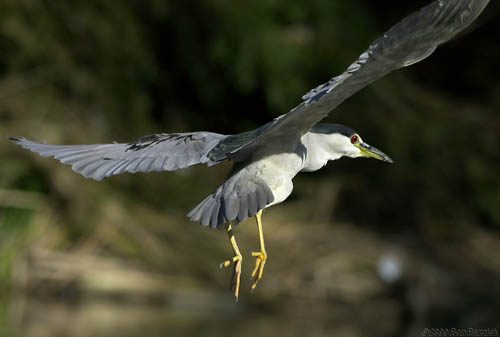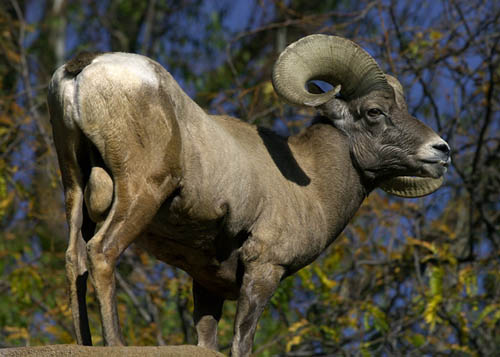|
|
|
| Use of the lens with Nikon tele coverters |
| The Nikkor 300mm f/4 AF-S is a 50 oz Internal-Focusing (IF) lens using two Extra-Dispersion (ED) glass elements, 10 elements in all, with a removable 4 oz. tripod mounting bracket, a Silent-Wave motor, a switch to set Autofocus with Manual override or Manual Focus, and a focus limiter for full-range or infinity-to-3 meters. It has a fixed, retractable hood. The lens is available in black (shown) or grey and black. It has a 9-bladed diaphragm, a 77mm filter thread and a smooth, sputtered paint finish. The minimum focus distance is 4.8 ft. |
| The Silent-Wave motor is the most exciting feature of this new lens. In comparison to the earlier EDIF version it focuses quietly and very rapidly considering the distance the elements must travel. The lens focuses from minimum (4.8 ft.) to infinity in about the same time it takes to do the same with a 50mm lens, and does not hunt if the focusing point is set on a subject. The autofocus allows extreme confidence in the use of the lens, and tracks a moving subject with precision. |
| The defocused areas are quite smooth, and definition is crisp. The 9-bladed rounded diaphragm creates defocused highlights that look circular rather than the straight-sided heptagonal highlights generated by a 7-bladed diaphragm. The lens is capable of acquiring minute detail and is exceptional for wildlife work. |
| Rapidly acquiring a bird in flight is considerably easier with the AF-S lens than with the earlier design, as the lens focuses on the subject quickly and can track it until the right moment arrives. Many shots are possible that simply could not be gotten without pre-focusing and extreme patience with a lens like the 300mm f/4 EDIF. Handling of the 300 f/4 AF-S is superb. The manual override makes fine-tuning focus easy without having to use a switch on the camera or lens, and the focusing ring falls under the index finger when hand-holding the lens. The older lens had the focusing ring too far forward. |
 |
 |
| From my tests so far, the lens does a really good job at f/4, losing little definition. I have no qualms about shooting the lens wide open, which really helps to keep the shutter speed up. As with any long focal length lens, it is necessary to use a fairly high shutter speed when hand-holding to avoid an unsharp image, or use a support device. When waiting for that perfect moment to arrive, the use of a monopod or tripod is almost a necessity to avoid fatigue as the lens and a D1 weighs nearly six pounds. On a bright day in direct sunlight it is easily possible to hand-hold the lens though. The body of this lens is a little larger in diameter than the 300 f/4 EDIF. |
| Overall, I am enchanted with the 300mm f/4 AF-S lens. It focuses so fast and smoothly that I can catch moments that would have passed long before the 300/4 EDIF would have acquired focus. Some sample pictures can be seen at http://digital-images.net — these will be added to regularly. |
| After using the lens for a couple of weeks, I have to say that this is a far more pleasant tool to work with than the 300 f/4 EDIF, if only because you can get the lens focused on a fast-moving subject almost every time. There is one issue that I have run into though: |
| The Tripod Collar |
| When mounted to a tripod using the tripod collar, at lower shutter speeds I have gotten unsharp images. Since I had read Bjorn Rorslett's experience with the collar, I decided to test against a fine-lined target. I shot several images with the lens mounted to the tripod via the collar, and with the camera mounted to the tripod via the body's socket (with the tripod collar off of the lens). The difference was consistent and very dramatic. These 1:1 crops show that the lens mounted on the tripod collar is far less sharp then when mounting on the camera body. The timer-release was used, but not the anti-vibration mode. Shutter speed was 1/20 at f/5.6 and the tripod used was a fairly heavy Star-D. This is not usually an issue for me since I generally shoot the lens hand-held or on a monopod, but it is something that needs to be addressed by Nikon. |
|
Mounted on the D1 body socket |
|
Mounted on the AF-S 300mm f/4 Tripod Collar |
| For Comments post in our News Group |